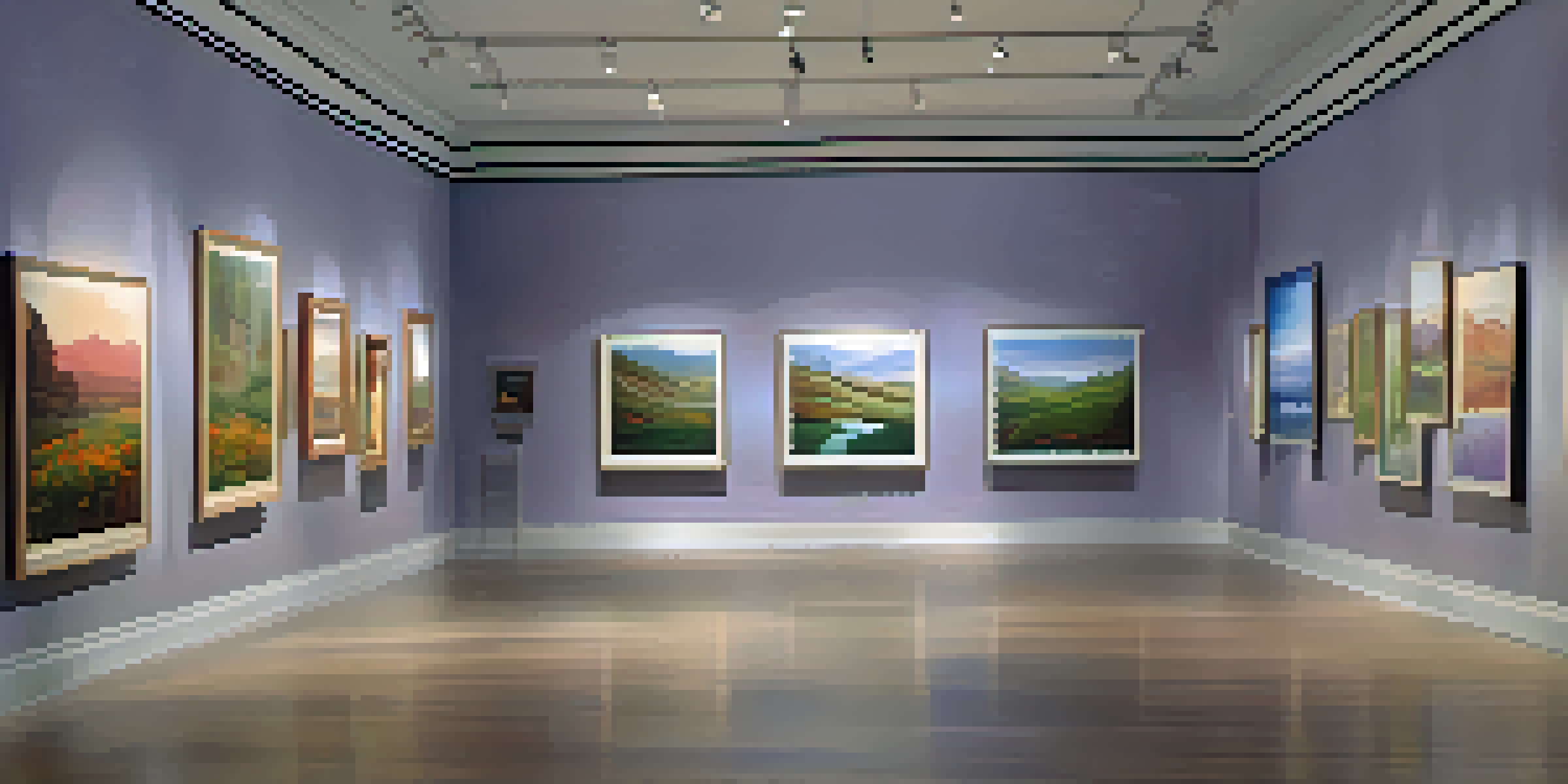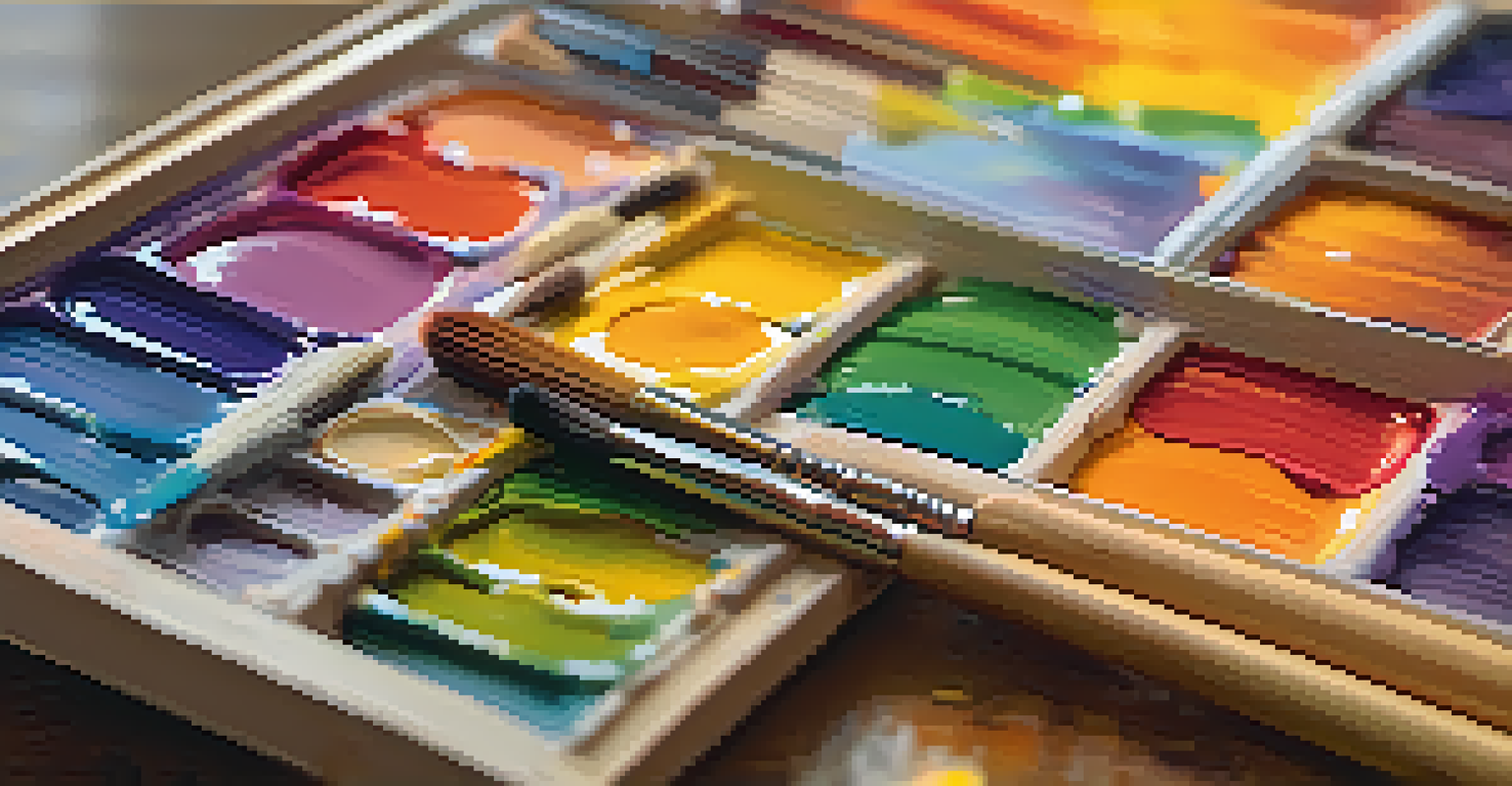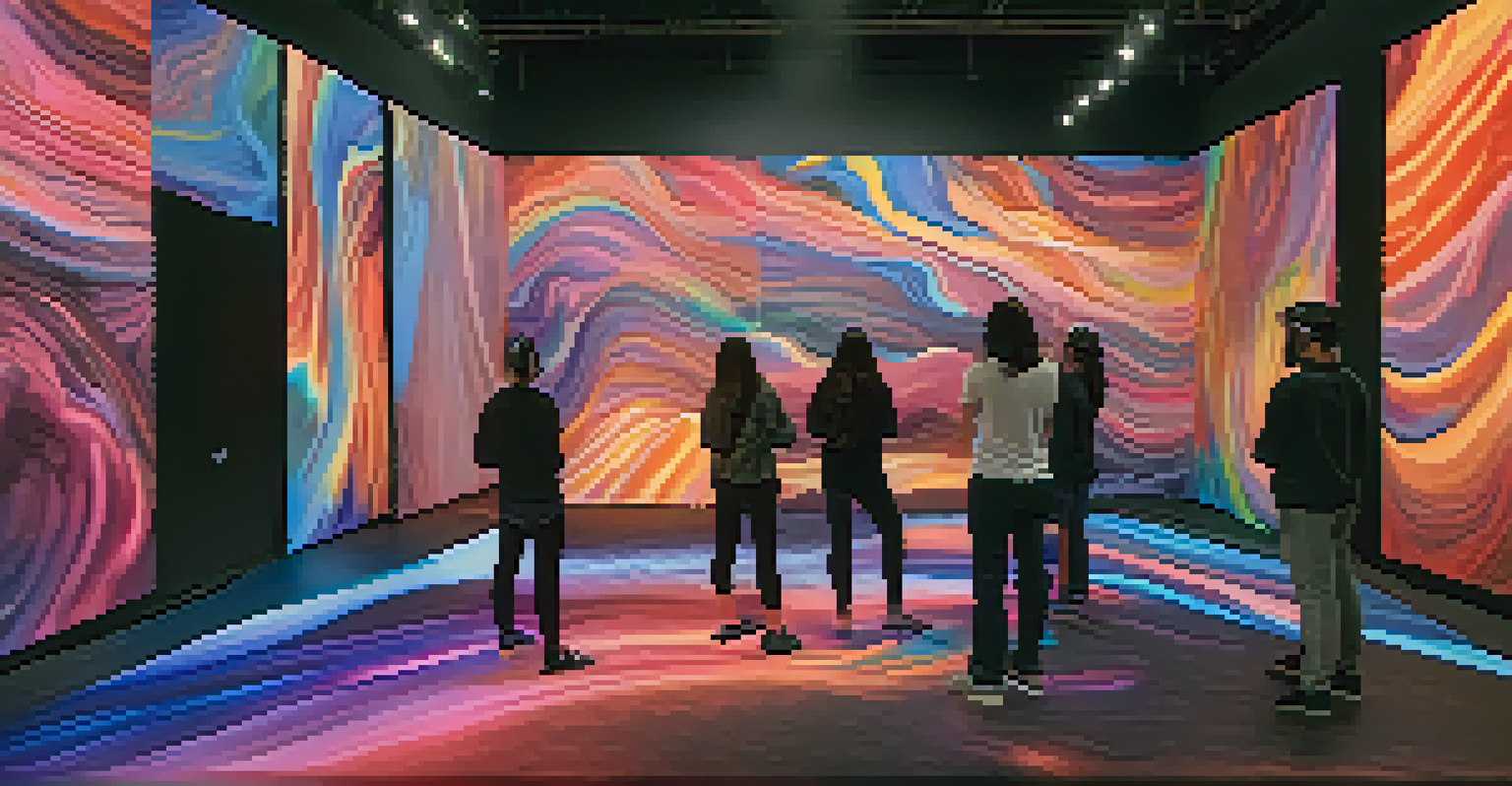The Role of Emotion in Multisensory Art Creation

Understanding Multisensory Art and Its Impact
Multisensory art is an innovative form of expression that engages multiple senses, combining visual, auditory, and tactile elements to create a richer experience. Think of it like a symphony where each note complements the others, creating a harmonious understanding of the artwork. This art form aims not only to be seen but also to be felt, heard, and sometimes even smelled or touched, inviting the audience to immerse themselves fully.
Art is not freedom from discipline, but disciplined freedom.
The impact of multisensory art can be profound, as it often evokes emotional responses that a single sensory experience might not achieve. For example, a painting accompanied by music may resonate with viewers on a deeper level, stirring feelings of joy, nostalgia, or even melancholy. This multisensory approach allows artists to tap into complex emotional landscapes, providing a more holistic experience.
As artists embrace this approach, they find that their work can transcend traditional boundaries, inviting a wider audience to connect emotionally. By engaging multiple senses, the artwork becomes a shared experience, fostering a sense of community and understanding among viewers. Ultimately, multisensory art highlights the emotional thread that binds us all, making it a powerful tool for communication.
The Emotional Palette: Using Feelings as Inspiration
Artists often draw from their emotional experiences when creating multisensory art, much like a painter selects colors from a palette. These emotions can range from joy and excitement to sadness and anger, serving as the foundation for their work. For instance, an artist might create a piece inspired by a joyful memory, using vibrant colors and upbeat sounds to evoke that same happiness in others.

By tapping into personal emotions, artists can create pieces that resonate on a universal level. Audiences are more likely to connect with art that reflects genuine feelings, as they often see a part of themselves in the work. This connection can lead to powerful reactions, where viewers might laugh, cry, or reflect deeply on their own experiences.
Multisensory Art Engages Emotions
This art form combines various sensory elements to create a deeper emotional connection with the audience.
This emotional depth not only enhances the overall experience for the audience but also allows artists to explore their own feelings. In this way, the act of creating multisensory art becomes a therapeutic process, enabling artists to navigate their emotions while inviting others to join them on that journey. It’s a beautiful reminder of how art can bridge individual experiences and collective emotions.
The Role of Memory in Emotional Art Creation
Memory plays a crucial role in the intersection of emotion and multisensory art. Artists often draw upon their past experiences, using memories as a wellspring of inspiration. For instance, a sculptor might create a piece that reflects a cherished childhood memory, using textures and sounds that evoke that specific time and place.
The more I paint, the more I realize that the act of painting is a journey into the self.
These memories can be powerful triggers for emotions, allowing the artist to explore feelings of nostalgia or longing. When viewers engage with such art, they may find themselves transported back to their own memories, igniting a shared emotional experience. This connection can create a profound sense of empathy and understanding between the artist and the audience.
Moreover, by embedding personal memories into their work, artists create layers of meaning that invite exploration. Viewers may interpret the artwork through their own lens, finding new associations and emotions that resonate with their life experiences. In this way, memory becomes a vital thread in the tapestry of multisensory art, weaving together individual stories into a collective narrative.
Creating Atmosphere: The Sensory Environment
The atmosphere created by multisensory art can significantly influence emotional responses. Artists often consider how elements like lighting, sound, and texture can transform a space and evoke specific feelings. For instance, a dark, quiet gallery filled with soft, ambient music may create a contemplative mood, prompting viewers to reflect on their emotions.
This atmospheric design extends beyond mere aesthetics; it actively shapes the viewer's experience. Imagine walking into an exhibit where the air is scented with lavender while soft visuals of nature play on the walls. Such an environment can evoke feelings of calm and serenity, making it easier for individuals to connect emotionally with the artwork.
Memory Shapes Artistic Expression
Artists use personal memories as inspiration, allowing viewers to resonate with their own experiences and emotions.
By carefully curating the sensory environment, artists can guide their audience through an emotional journey. This intentionality allows for a deeper engagement with the art, where viewers are not just passive observers but active participants in their emotional exploration. The atmosphere thus becomes an integral part of the multisensory experience, enhancing emotional resonance.
Collaboration and Emotion in Multisensory Art
Collaboration plays a pivotal role in the creation of multisensory art, often leading to richer emotional outcomes. When artists from different disciplines come together—such as visual artists, musicians, and dancers—they can share their emotional insights and creative perspectives. This exchange can result in innovative works that resonate on multiple levels.
For example, a visual artist collaborating with a musician might create a piece where the colors and shapes reflect the rhythm and tone of the music. This synergy not only enhances the emotional depth of the work but also invites audiences to experience the art in a more immersive way. Such collaborations can spark new ideas, pushing the boundaries of traditional art forms.
Moreover, the emotional energy generated through collaboration can be contagious, engaging both the creators and the audience. When artists share their vulnerabilities and experiences, they invite viewers to do the same, fostering a sense of community. This collective emotional experience highlights the power of art to connect individuals, creating a shared space for reflection and understanding.
The Psychological Effects of Multisensory Art
The psychological effects of multisensory art can be profound, as it taps into our emotions and memories in unique ways. Engaging multiple senses can lead to heightened emotional responses, increasing the likelihood of catharsis or emotional release. For instance, experiencing a powerful piece of multisensory art may help viewers confront feelings they’ve buried or overlooked, leading to a transformative experience.
Research suggests that multisensory experiences can also enhance memory retention. When emotions are involved, we are more likely to remember the details of an experience. By integrating various sensory elements into their art, creators can forge stronger connections between the artwork and the audience's emotional landscape, making the experience more memorable.
Future Tech Enhances Artistic Interaction
Advancements like VR and AR promise to create immersive multisensory experiences that engage viewers emotionally and expand accessibility.
Additionally, multisensory art can serve as a form of therapy, helping individuals process complex emotions. Art therapy often utilizes multisensory techniques to facilitate emotional expression and healing. By engaging with art that resonates on multiple levels, individuals can explore their feelings in a safe and supportive environment.
The Future of Emotion in Multisensory Art Creation
As technology evolves, the future of multisensory art creation holds exciting possibilities for emotional exploration. Virtual reality (VR) and augmented reality (AR) are beginning to play significant roles in this space, allowing artists to create immersive experiences that engage viewers on a deeper emotional level. Imagine stepping into a virtual world where colors, sounds, and textures respond to your emotions in real-time.
These advancements can extend the reach of multisensory art, making it accessible to wider audiences. Artists can create experiences that are not only visually stunning but also emotionally resonant, regardless of geographical barriers. This democratization of art allows for diverse emotional expressions, enriching the global artistic landscape.

Moreover, the future may see more interdisciplinary collaborations that merge art with science, psychology, and technology to enhance emotional expression. By understanding the emotional triggers in multisensory experiences, artists can craft pieces that resonate deeply with viewers. As we look ahead, the interplay between emotion and multisensory art will continue to evolve, inviting us to explore the depths of our feelings in new and innovative ways.